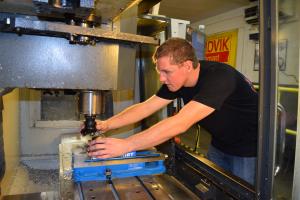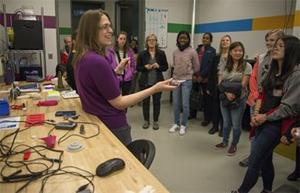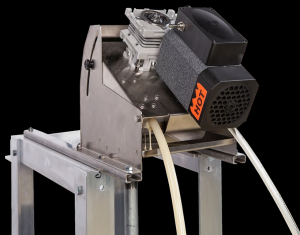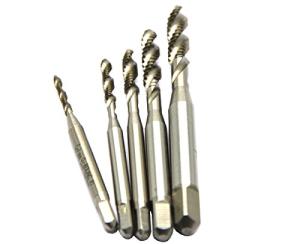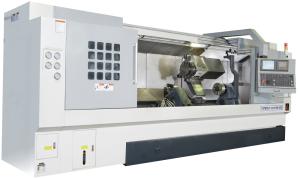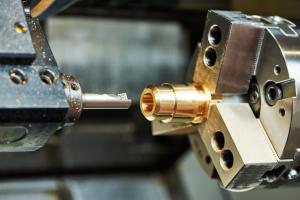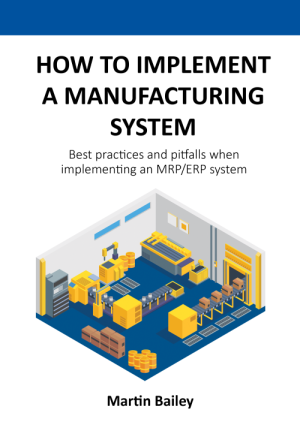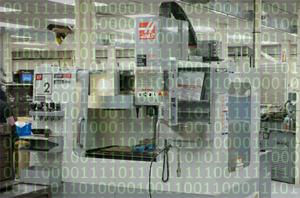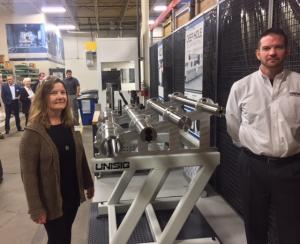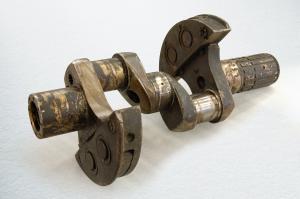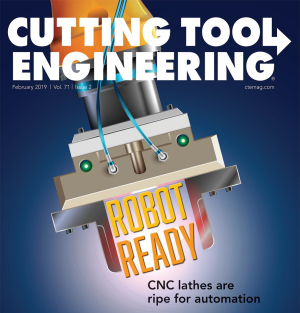Blogs for all/
In connection with my article about flexible manufacturing systems for the February issue, I visited Camcraft Inc., which has a Makino Machining Complex (MMC2) automated pallet-handling system. Four Makino 4-axis a51nx horizontal machining centers are integrated into the system.
Although the book doesn’t cover machining parts, “Blowout” by Rachel Maddow, host of “The Rachel Maddow Show” on MSNBC, does examine an industry that’s a major consumer of precision machined parts—oil and gas.
Since its founding in 2008, 421 graduates of the nonprofit school Workshops for Warriors, San Diego, have earned 2,500 nationally recognized certifications from the National Institute for Metalworking Skills Inc., the American Welding Society and more. Even more noteworthy is the fact that the educational institution exists to train military veterans for metalworking careers. Manufacturers have lined up to support that mission, with more than 70 corporations each donating $10,000 or more in cash, equipment or materials in 2016 and the first 7 months of 2017 alone. Workshops for Warriors must raise $2.5 million annually just to maintain current operations.
In manufacturing, the nature of the work as well as the nature of the workers are changing: What’s a prospective employer to do? Some pre-Manufacturing Day discussion.
Every day, it happens. Someone from Houston calls, or maybe San Francisco, peddling precision-machined parts from China. Then there are the emails from people with fake names—like Lily, Annie and Susan—overflowing my inbox with offers of low part costs and excellent service. Please, China, I don’t want to buy machined parts from you. No metal stampings. No plastic injection molds or 3D-printed prototypes. And at the risk of offending those who do, you shouldn’t either.
After helping customers to remove tramp oil from coolant for more than 40 years, Jim Petrucci, vice president of Oil Skimmers Inc., has yet to hear from anyone that doesn’t have at least some tramp oil present in an individual machine sump or large holding tank. When enough tramp oil seeps into coolant on a steady basis to justify the acquisition of oil-removal equipment, which is common, the Cleveland-based company offers oil skimmers to remove surface oil.
I received an email from a reader letting me know that he disagreed with my recent article on tapping versus thread milling. In it, I stated, “There’s little chance of successfully thread milling metals much above 45 HRC. And if you’re going to try to tap them, be prepared to duck the flying shrapnel when the tap explodes!” We all make mistakes. So when Tom Fares, president of TNT Custom Equipment in Stow, Ohio, called me out on that section of the article, saying that he routinely taps holes in 45 HRC steel alloy and thread mills into “the low 60s,” I listened to what he had to say.
Sept. 25 marked 39 years to the day since I first stood in front of a Hardinge hand screw, scratching my head over the knobs and handles and wondering what I’d gotten myself into. To say that machine tools have improved since then is like saying this year’s computers are only slightly more powerful than those of a decade ago or that salted caramel ice cream is marginally more flavorful than vanilla. Today’s machine tools rock.
New research by the Copper Development Association Inc., McLean, Virginia, shows that U.S. machine shops may be underutilizing the machinability of brass by as much as 85 percent in part-processing operations. The study says manufacturers can and should be machining the material at significantly higher speeds and feeds—often five to 20 times faster—to increase productivity and profitability.
When parts manufacturers enter the world of Industry 4.0, in which their operations are data driven, they will need production control software, such as a program for enterprise resource planning or materials requirement planning. In his new book “How to Implement a Manufacturing System,” Martin Bailey covers the best practices and pitfalls when implementing an MRP/ERP system.
I attended ‘Integr8,’ an Industrial Internet of Things conference hosted by Automation Alley at Detroit’s Renaissance Center last month. At numerous breakout sessions, a common question from participants was, “How do I get started with getting my shop floor connected?” This was an event full of experts enthused by the possibilities that IIoT hold for manufacturers, so I was pleasantly surprised to hear many of them reply, in effect: “With moderation.”
There were a lot of deep discussions about holemaking at UNISIG’s recent open house and seminar series for magazine editors. UNISIG engineers explained different methods of deep-hole drilling, including gundrilling and BTA drilling, and provided an overview of the machines and related systems the company builds to perform these operations. Hands-on demonstrations in UNISIG’s 62,000-sq.-ft. plant augmented the classroom discussions.
Although millions of manufacturing jobs may need to be filled in the years to come as baby boomers continue to retire, many manufacturers already struggle with unfilled positions. One efficient way to combat the problem is by improving company websites, said Claudia Pennington, co-founder and CEO of DIY Marketing, Marietta, Pa.
As the factories for U.S. manufacturers are increasingly becoming digitized and connected, the surface for cyberattacks is broadening. To allow experimentation on cybersecurity technology for the factory floor, the Digital Manufacturing and Design Innovation Institute, Chicago, officially launched its “Cyber Hub for Manufacturing” earlier this month. DMDII reported that the U.S. Department of Defense contributed $750,000 in seed funding for the hub.
Some people say there is an art to machining. In some cases, there is actual artwork. Machinists Inc. in Seattle, the largest precision machining shop in the Northwest, has made big sculptures since the early 1990s. The first piece was a 17'×13'×3' steel sculpture that hangs in Harborview Medical Center in Seattle, and many more have followed. However, art accounts for only about 1 percent of the manufacturer’s work, said Weld Engineer Steve Pollard, who has been with the company for 30 years.
If debris or contaminants are not removed from parts, then measured values and physical dimensions can be affected, causing parts to behave unreliably and unpredictably, according to Cincinnati-based Cleaning Technologies Group LLC. “A new generation of industrial manufacturing is characterized by highly accurate machining and finishing processes, as well as precision manufacturing methods,” the company writes in a new e-book available online. “Manufacturing tolerances and acceptable limits in part variation are tighter than ever.”
As the cover indicates, the February issue will include a focus on automation. In addition to Contributing Editor Kip Hanson’s cover story about automating CNC lathes, I wrote about the productivity gains Camcraft Inc. is realizing after installing a Makino Machining Complex (MMC2) flexible manufacturing system.
When making a cutting tool, I tend to think of a drill, endmill or other metalcutting tool being produced on a CNC tool and cutter grinder in a factory. A book by Bradley Richardson, however, describes how to make a different type of cutting tool with manual tools and equipment in a nonproduction environment. Published by Fox Chapel Publishing Co. Inc., Mount Joy, Pennsylvania, “Making Your Own Bush Knife: A Beginner’s Guide for the Backyard Knifemaker,” details the process of creating a custom knife.
Pagination
- First page
- Previous page
- 1
- 2
- 3
- 4
- 5
- 6


